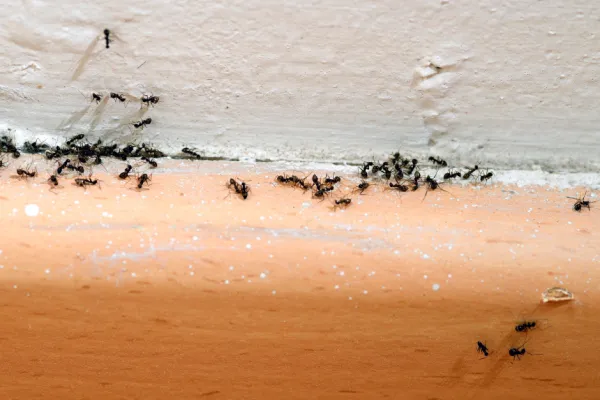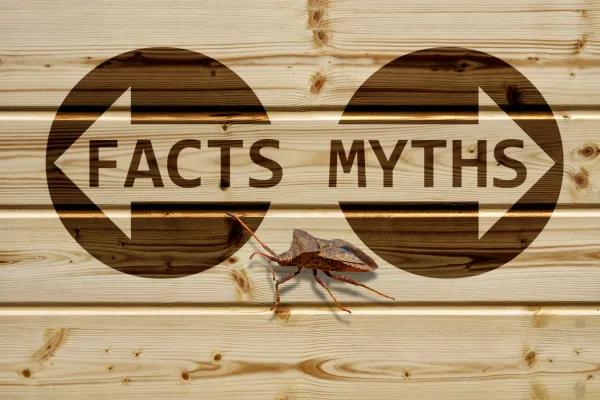Are You Ready for Flea and Tick Season?

As many families begin heading outside to enjoy the warm temperatures once again, we tend to forget about pest protection amidst the excitement. Unfortunately, exploring the great outdoors comes at the cost of bringing fleas and ticks back home with us, especially if your furry friend is tagging along. After being in the pest management business for more than 45 years, our local exterminators have a few tips to help you avoid fleas and ticks while enjoying the warm weather and sunshine!
How to Prepare for Flea & Tick Season in the South

Image Credit: American Kennel Club
Unfortunately, in southeastern states including South Carolina, North Carolina, and Georgia, flea and tick season lasts all year long. However, in the warmer months (sometimes as early as March), fleas and ticks do become more active. As you start to spend more time outside, it's important to take the proper precautions so that you don't unwittingly bring these pests into your home.
What Are Fleas?
Fleas are tiny, flightless parasitic insects that prefer to live and feed on mammals and birds. They may occasionally hitch a ride on humans or temporarily live in the fibers of furniture and carpeting if no animals are around. While flea bites are certainly uncomfortable, they also can transmit diseases like flea-borne spotted fever, plague, typhus, and cat scratch fever. Ingesting the flea itself can also lead to tapeworm infections in dogs, cats, and people. Furthermore, a flea infection can be very frustrating and time-intensive to eliminate.
What Are Ticks?
Ticks are tiny parasitic arachnids that feed by latching onto a host. Ticks aren't particularly picky eaters and will feed on birds, amphibians, mammals, reptiles, and humans. If left undisturbed, the tick may remain on the host for several days or weeks, depending on the species and stage of the life cycle. An adult female tick may remain attached for 7-10 days, and as the tick feeds, it swells and fills with the host's blood. Once the tick is full, it will hop off on its own. Unlike fleas, ticks can and do live on humans. Ticks can be dangerous, as some species carry diseases, so be sure to regularly check yourself and your pets after spending time outside.
How Can I Protect Myself and My Pet from Fleas and Ticks?
Once inside the home, pests can be a hassle to remove. That's why prevention is one of the most important steps in our integrated pest management plans. Talk to your local pest control company about the best pest prevention strategy for your home and needs. Here are a few other precautionary steps you can take around your home:
1 - Maintain Regular Flea and Tick Care for Pets
Veterinarians and other pet care experts highly recommend a preventative treatment program to help your pet avoid fleas and ticks. There are a variety of options for you to choose from including medicated collars, oral pills, and more. After spending time outside, especially in wooded areas or long grasses, make sure to check over your pet, keeping an eye out for tiny, jumping black dots (fleas) or dark bumps that resemble warts or blood blisters (ticks).
For pets with thick fur coats, make sure to regularly use a flea comb or brush outside. You may want to have them groomed more frequently in the summer to avoid a potential pest problem. If you do find any fleas or ticks on your pet, make sure to bathe them immediately with medicated shampoo from your local pet store or veterinarian's office to alleviate itching. If you spot ticks, remove each one using the method below or take your pet to your veterinarian for removal.
2 - Practice Prevention When Going Outside
Most pet owners give their furry friends preventative medication, but what about the person on the other end of the leash? While there isn't a regular flea and tick preventative for humans, there are measures you can take to mitigate the risk of being exposed to these insects. If you plan on heading outdoors this season, make sure to wear light-colored clothing so that, if a tick does hitch a ride on you, it will be easy to spot. Dark clothes are much hotter anyways!
Wear long sleeves and pants that are tucked into long socks to cover as much bare skin as possible. If you are going on a hike, try to stay on the cleared pathways of the trail and avoid exploring areas with overgrown brush, shrubbery, or grass. Limit contact with other animals such as deer, raccoons, feral cats, and other pets during peak season, if possible. Always give yourself and your furry friend a thorough inspection before going back inside your home. If you do spot a tick, make sure to properly remove and dispose of it according to CDC guidelines.
3 - Address Problem Areas Around Your Yard
Your first line of defense is prevention outside of your home. Some spots in your yard are more likely to host an infestation of fleas and ticks than others. By knowing where these pests are most likely to live, you can treat your yard accordingly and reduce the likelihood of bringing them inside the house. Keep a watchful eye out for potential problem areas such as overgrown shrubs, damp leaf and woodpiles, storage sheds, dog houses, tall grasses, and more.
Reduce the curb appeal for fleas and ticks by keeping your grass mowed and shrubs trimmed back enough that air and light can circulate throughout. This will help reduce the dampness of the ground underneath. Place woodpiles away from your home (at least 20 feet away and off the ground). Remove leaf piles immediately after raking, as these can be pest playgrounds. Avoid leaving out Fido's bowls outside, too, because this can attract wild animals like possums, raccoons, and feral cats. These animals are known to bring fleas and ticks with them.
4 - Regularly Clean Inside Your Home
A pest infestation doesn't mean your house is dirty. Unfortunately, even the most immaculate home can be susceptible to flea and tick infestations. Oftentimes, these pests are accidentally brought inside by pets or unsuspecting family members who have spent time outdoors. However, frequent cleaning can make your home less welcoming to unwanted pests.
Vacuuming your home weekly can help reduce the risk of fleas living in your carpet and rugs. Using a steam cleaner over fabrics, linens, and carpets before vacuuming can also help kill and remove any eggs that might be living inside your home. If you do suspect an infestation, make sure to dispose of the vacuum bag away from your home. You should also wash all pillows, sheets, blankets, pet beds, and so on. However, this likely won't resolve a full-on infestation, as flea larvae can burrow into the tiniest cracks and crevices so that no amount of vacuuming can dislodge them.
Prepare for Flea and Tick Season with Palmetto Exterminators
Keep in mind that during the warm months when flea and tick activity is at its peak, your home is much more vulnerable to fleas. Most tick species need extremely high levels of humidity, and therefore can't survive for more than a few days in a climate-controlled home (buildings without AC such as cabins, storage sheds, and dog houses are a different story).
Flea infestations, on the other hand, are much more common and noticeable. If you have fleas in your home, you may feel bites around your ankles and lower legs. If you have pets, they will likely start scratching themselves more frequently or rolling around to alleviate the itchiness.
As trusted local exterminators, we can help eliminate the fleas and ticks in and around your home with a pest prevention and control plan designed specifically for you. Don't let fleas and ticks stop you from going outside this summer - contact us today for a free pest inspection!


